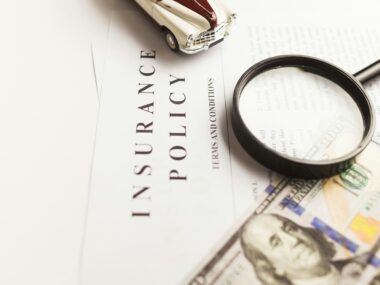Engineering consulting is a demanding profession that requires expertise, care, and compliance with high standards. However, even the most diligent consultants can face unforeseen issues that lead to claims of negligence or errors and omissions. To protect themselves and their businesses, liability insurance has become essential for engineering consultants.
As technology and regulations continue to evolve, the risks and responsibilities of engineering consultants are also changing. Entering 2024, it is more important than ever for consultants to understand the types of liability insurance available, what they cover, and how to select the optimal policies for their unique needs.
Types of Liability Insurance for Engineering Consultants
There are several major types of professional liability insurance policies available for engineering consultants to consider. The two primary categories are errors and omissions (E&O) insurance and general liability insurance. Let’s explore the key differences and coverage details of each:
Errors and Omissions Insurance
Also known as professional liability insurance or malpractice insurance, E&O coverage specifically protects engineering consultants from claims of professional negligence or failure to perform duties with reasonable care, skill, and expertise. It covers costs resulting from errors, omissions, or unsatisfactory work that cause financial losses to clients or third parties.
Some common situations covered under E&O policies include:
- Providing incorrect advice, designs, or recommendations
- Failing to complete work according to contract terms
- Missing deadlines or submitting flawed reports
- Errors in calculations or technical plans
- Overlooking code requirements or safety standards
E&O policies will pay legal defense costs if a lawsuit is filed, as well as any settlement amounts or damage awards the consultant is required to pay. Policy limits usually range from $1 million to $5 million per claim.
General Liability Insurance
While E&O focuses specifically on professional services, general liability insurance offers broader protection for bodily injury and property damage claims that could occur at a consultant’s business premises or resulting from day-to-day operations.
Covered scenarios may involve visitor injuries in the office, vehicle accidents, fire damage, or faulty equipment leading to property losses. General liability policies typically include:
- Bodily injury liability
- Property damage liability
- Personal injury liability
- Medical payment coverage
- Non-owned/hired auto liability
Combined policy limits often max out at $1 million but can go higher depending on individual risk exposures. Consultants are wise to carry both E&O and general liability policies for full protection.
Evaluating Your Risks as an Engineering Consultant
When selecting liability insurance policies, it’s important to consider the specific risks you face based on your consulting niche, services provided, and client industries served. Higher-risk specialties naturally require greater coverage. Some factors that impact risk profiles include:
Project Type and Complexity
Designing infrastructure for heavy construction brings more inherent risks than doing quality control checks. Projects involving public safety systems, hazardous materials, unstable environments, or ambitious new technologies demand robust E&O limits.
Client Industries
Serving clients in high-risk fields like nuclear power, oil/gas, aviation/aerospace, or healthcare exposes consultants to greater potential for serious damages from failures or errors. E&O policies may have stricter terms and conditions or premiums for these industries.
Contract Terms
Contracts requiring warranties or guarantees for work quality, timeframes, or budgets increase risk exposure. Be careful not to assume liability beyond your level of control or expertise. Review all legal obligations closely.
Geographic Regions
Working internationally presents issues like political risks, differing safety standards and regulations, communication barriers, and challenges enforcing policy terms across borders if needed.
Firm Size and Experience
Larger consulting firms handling mega-projects or with extensive client rosters have greater exposure than small, project-based solopreneurs. New startups and less experienced consultants also warrant extra coverage until proven track records develop.
By thoroughly assessing risks particular to your practice area, locations, clients, and contracts, you can select the optimal liability policies with limits matching your true exposures. Don’t take chances by skimping on protection.
Additional Insurance Considerations for 2024
With changing times come evolving risks that consultants must account for when choosing coverage. Here are some developing trends to keep top of mind:
Cyber Liability
As consulting work increasingly relies on digital plans, databases, and communications, the risk of data breaches, hacking, ransomware, and other cyber incidents grows. Look for E&O or standalone policies, including network security and privacy liability components.
Professional Services Firms
Larger consultancies structured as professional services firms (PSFs) take on additional exposures related to employment practices, intellectual property, and other corporate risks. Evaluate Directors and officers and Employment Practices Liability Insurance as needs dictate.
Climate Change Impacts
Designs impacted by rising sea levels, extreme weather events, wildfires, or other climate dangers may face increased litigation. Policies responsive to these evolving exposures help mitigate new potential losses and third-party claims.
Long-Tail Liability
Infrastructure and systems with decades-long lifecycles present long-tail risks where errors or defects may not surface for many years. Verify policies include extended reporting periods or unlimited reporting endorsements.
Thoroughly vetting coverage for these types of emerging exposures will keep consultants protected amid changing conditions well into 2024 and beyond. Adaptability remains critical.
Selecting the Right Limits and Deductibles
With so many moving parts, figuring out ideal liability insurance limits and deductibles can feel daunting. But keeping these guidelines in mind makes the process more manageable:
- Set E&O limits at least 2-3 times higher than your largest annual project contract value
- Consider minimum per-claim limits of $2 million for higher-risk specialties
- Establish aggregate limits equal to your annual project receivables
- Set deductibles you’re comfortable paying from reserves ($1,000-$5,000 ideal for most)
- Use risk assessment to tailor coverage as business and markets change
- Get quotes from multiple insurers annually to review the best options
Work with your broker to forecast exposure scenarios, look at industry benchmarks, and make selections maximizing protection, given your budget. Revisit choices regularly to modify as your practice grows or contracts. The right balance serves you best over the long haul.
Purchasing a Liability Insurance Policy
Once you’ve done your due diligence selecting appropriate coverages and limits, the purchasing process generally involves:
- Contacting an insurance broker experienced with professional liability policies. Discuss your needs and risk profile.
- The broker will shop policies and carriers, providing proposals for review. Consider included/excluded services closely.
- Select the best-balanced fit for coverage, pricing, and insurer financial strength/ratings. Ask all questions until comfortable.
- Submit applications with background details, sign agreements, and pay initial premium amounts.
- Maintain renewal payment schedules to keep coverage uninterrupted. Reassess options periodically with your broker based on changing firm circumstances.
Working with a trusted insurance advisor smooths the acquisition process and helps maximize value from liability protection through the lifetime of your consulting practice.
FAQs About Liability Insurance for Engineering Consultants
Here are answers to some frequently asked questions:
What if I can’t afford liability insurance?
Without coverage, you leave your business assets and personal finances exposed to ruin from claims. Consider less coverage, higher deductibles, or payment plans to get insured until rates become affordable as your experience grows. The risk of operating without protection outweighs the cost.
Is professional liability insurance mandatory?
While not legally required in most jurisdictions, no reputable client will hire an uninsured consultant. Coverage demonstrates financial responsibility and protects your qualification to sign/seal engineering work. It’s a basic business expense for consultants.
Will my premiums go up if I have claims?
Potentially, yes – filing claims can impact future renewals through higher rates or stricter terms from nervous insurers. It’s best to prevent claims through quality work and carefully managed risk. Coverage exists to help in unavoidable situations rather than relying on it primarily.
What isn’t covered by professional liability policies?
Exclusions generally involve bodily injury, property damage, auto accidents, contractual warranties/liquidated damages, criminal/fraudulent acts, pollution/asbestos, and sometimes partners in fighting claims. Review contracts and policies closely to understand gaps in protection to address proactively through other appropriate insurance.
How long does claims-made coverage last?
Claims-made policies cover allegations made and reported during the policy period, regardless of the accident date. For this reason, an extended reporting period (ERP), like 12-36 months, allows reporting past work after coverage ends. Unlimited ERP provides lifetime claims protection, though at a higher premium.






